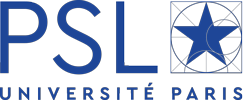Nearly two years of scientific research on Covid-19: perspectives from PSL researchers
Ever since March 2020, from the time the virus was discovered to the introduction of a vaccine, the emergence of new variants and the epidemiological ups and downs, all eyes have been turned to the findings and results from scientific studies. The scientific advances and positions taken in those studies were each driven by interdisciplinary scientific research. Now, more than a year and a half since the start of the pandemic, three PSL researchers take a look back and also gaze into the future regarding the pandemic’s impact on their activities and field of inquiry.
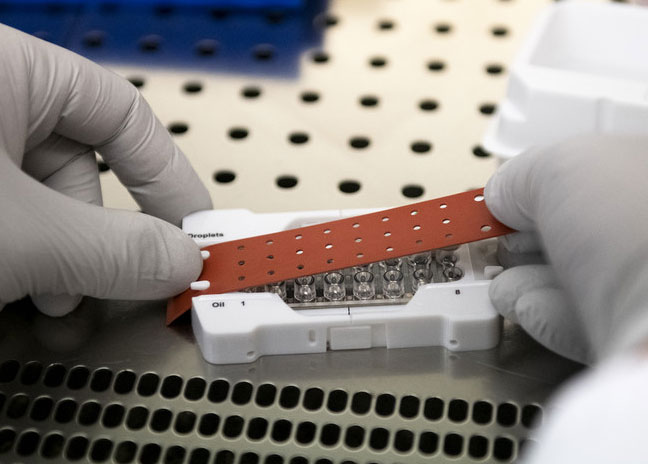
A joint interview with:
- Rémi Carminati, Vice President for Research, Université PSL; physicist
- Miquel Oliu-Barton, Professor, Dauphine - PSL; mathematician
- Clotilde Théry, Inserm Research Director, Institut Curie; immunobiologist.
PSL: In March 2020, many laboratories reoriented their research activities to focus on Covid-19. In retrospect, how do you look back on that critical time? Has the pandemic had a lasting impact on your research?
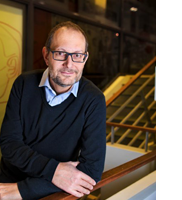
Rémi Carminati: The Covid-19 pandemic revealed the agility of the scientific community, which mobilized on a massive, rapid scale, both at PSL and elsewhere. In the process, the pandemic has highlighted something that researchers know but the general public doesn’t always realize: any large-scale crisis, whether it’s in public health, climate, the economy... requires an interdisciplinary response. Developing a vaccine or a medical treatment, implementing a public health policy, even managing a crisis: it all derives from scientific work that combines basic research (biology, behavioral sciences, etc.) and applied research (biotechnology, data management and so on). In France, given the controversy surrounding the vaccine when it was announced, it was easy to forget that having a vaccine after just a year is a huge scientific and technological achievement that was only made possible by an international, interdisciplinary effort.
And French researchers were fully involved in that effort. In the field of public health, for example, PSL has developed research that really complements the medical research underway at other French universities and hospitals. One example is the research being conducted at the crossroads of biology, physics and chemistry by PSL’s Q-Life Institut Convergences, not to mention the work of Miquel Oliu-Barton and Clotilde Théry in their respective disciplines. The table that shows PSL’s various scientific initiatives in response to Covid-19 likewise offers a good picture of the level of interdisciplinary teamwork needed to tackle these challenges.
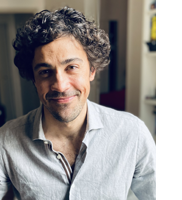
Miquel Oliu-Barton: The world came to a halt in March of 2020 and, like Rémi said, that prompted researchers in every field to start thinking about the pandemic. Initially the task was to understand how the virus spread, so as to find ways to curb that spread. Mathematicians (especially those who model infectious diseases) and medical personnel were quick to point out that the exponential growth in the number of new infections – reflected in an average rate of reproduction R0 that was significantly larger than 1 – needed to be stopped as quickly as possible. So preventive measures, social distancing and restrictions on travel were adopted worldwide.
With economist Bary Pradelski from the CNRS, we developed a different approach: what if we divided each country into “zones” and allowed all social activity to resume in “green zones” where the virus had been brought under control? In addition, we recommended that people be allowed to move freely among different green zones in Europe, regardless of their country of origin, and that we use a “Russian doll” strategy in defining those zones. That would give us a way to treat resurgences of the virus effectively while preventing the need for disproportionate measures at the national level. Using simulations, we discovered that controlling travel at multiple spatial scales (municipality, département, region, country) would be an enormous factor in helping us emerge from the crisis; it appeared to be advantageous from a public health standpoint as well socially and economically. That insight was quickly borne out in our discussions with colleagues from the fields of economics and epidemiology, and they partnered with us from that point on. In hindsight, it’s that interdisciplinary effort that had the biggest impact on me, and it’s essential to ensure that continues once the pandemic is over.
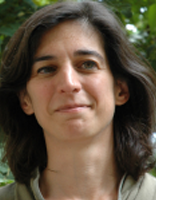
Clotilde Thery: It’s true, agility is inherent in what we do. When Covid-19 isn’t an issue, my research team is investigating a form of communication between cells, known as extracellular vesicles. Our priority interest, as a matter of basic research, is in understanding how those vesicles form and how they’re secreted, and the role they play in how tumors develop and interact with the immune system. Ultimately our ambition is still to use that knowledge to develop new therapeutic and diagnostic tools, but we haven’t had much opportunity to pursue that goal over the past five years. When the quarantine began in March 2020,
we quickly realized that we could apply our knowledge of intercellular communication to the issue of SARS-CoV2 infection, particularly with a more “applied” focus. Clotilde Thery
we had to abruptly halt all our research projects in that area, but we quickly realized that we could apply our knowledge of intercellular communication to the issue of SARS-CoV2 infection, particularly with a more “applied” focus, since our idea was to develop a way to prevent the initial stage of infection by using vesicles to “fool” the virus. In some ways, that approach rekindled my interest in more actively pursuing some of our projects from an “applied” standpoint, with regard to both SARS-CoV2 (if we obtain funding to continue that research) and our core topics of research, cancer and immunotherapy.
Covid-19: PSL research projects
PSL: Has the Covid-19 crisis, in your view, generated new forms of collaboration in the world of research? Is it fair to talk about a post-pandemic scientific world?
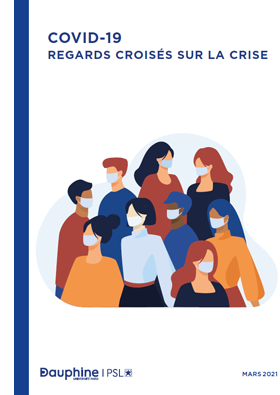
Miquel Oliu-Barton: Tackling interdisciplinary issues is difficult, but it’s important. Together with about thirty of my colleagues, I contributed to a book entitled Regards croisés sur le Covid-19 (Perspectives on Covid-19) that reflects PSL’s desire to take an interdisciplinary approach. Every field offers its own perspective, based on its own in-depth knowledge; sometimes those perspectives are complementary and sometimes they conflict. Let me illustrate that with a concrete example. Doctors see the crisis from inside the hospital; they’re faced with a rising number of intensive care patients and deaths as a result of Covid-19. Economists, on the other hand, analyze the impact of the quarantine measures by studying businesses in dire financial straits, changes in the unemployment rate and the impact on government revenues. Do you open up the economy or protect public health? That was the quandary that our policies had to address in late summer of 2020. But was that really a quandary? When we analyzed data from the first 12 months of the pandemic, we realized that, all over the world, the same response was appropriate for both the economy and public health. That finding, which was surprising because it was counterintuitive, made us want to expand our analysis by seeking out experts in public health, sociologists, political scientists and so on. That collaboration culminated in a brief study that was published in The Lancet in April, the impact of which we still haven’t fully grasped. Economic growth, public health and also our civil liberties – we can have all three once we choose to focus on eliminating the virus. In some ways that study confirms our initial intuition about the benefits of green zones by providing data to back us up.
Do you open up the economy or protect public health? That was the quandary that our policies had to address in late summer of 2020. But was that really a quandary? When we analyzed data from the first 12 months of the pandemic, we realized that, all over the world, the same response was appropriate for both the economy and public health. Miquel Oliu-Barton
Clotilde Thery: In terms of my team’s internal operations, this new project proved very rewarding, because I was able to give two senior postdoctoral fellows on my team, Lorena Martin-Jaular and Mercedes Tkach, the opportunity to showcase their management abilities and their scientific maturity: they’re the ones who steered the project up until publication of the article in record time! With regard to outside collaborations, we needed resources that were supplied by other teams: Nicolas Manel’s team at the Institut Curie and Olivier Schwartz’s team at the Institut Pasteur. During this urgent crisis period, everyone was very willing to share tools and knowledge, so as to capitalize most effectively on that interdisciplinary expertise. But that cooperation happened on the national level, and it was only later that I discovered that other teams elsewhere in the world were developing projects similar to mine on their own. Scientific discussions in the field of extracellular vesicles are fairly open and cordial (particularly within the International Society for Extracellular Vesicles, of which I’ve been president since July 2020), but I think that given the financial challenges of doing biomedical research, exacerbated by the urgent need to address the pandemic, that attitude of sharing and dialogue won’t necessarily last forever. But maybe I’m too pessimistic!
Rémi Carminati: It’s definitely a little early to start talking about a new, post-pandemic scientific world. Nonetheless, the pandemic does seem to have broken down certain barriers by prompting us to change our usual habits. As Clotilde and Miquel have said, in March 2020 our laboratories had to abruptly shift gears, in a way they had never done before, in order to focus their work on issues that required a rapid response. What quickly emerged from that was an alliance between basic and applied research that up until then had been fairly uncommon. As scientists, we had to mobilize the expertise in our laboratories to provide concrete solutions in a short timespan. Not only were we able to do that, but we also demonstrated how important it is to link those two scientific approaches.
None of that is new. The history of science is studded with scientific advances that were driven by very practical questions. Personally, I’ve been convinced for many years that an alliance of that kind will ensure that science can play its role to the fullest by helping people live better lives. And while PSL was already firmly committed to that process pre-Covid, I believe this recent crisis has opened up new prospects and new forms of collaboration, and I’m anxious to see them bear fruit.
PSL: Since the start of the pandemic, politicians and the public at large have been attuned to research and the opinions of scientists to a degree we’ve never seen before. Each of you has taken part in those discussions. What’s been your takeaway from those conversations? Do you think we can now expect to see closer ties between the scientific world and the public at large?
Miquel Oliu-Barton: The relationship between the sciences and politics has changed during this crisis. In March of last year, governments were in a state of shock and looking for answers from the scientific world. But scientists, having neither data nor past experience to draw on, turned to theoretical models. And that’s how our proposal for zone-based quarantine (Oliu-Barton and Pradelski 2020a) came to the attention of France’s Council of Economic Analysis (CAE) and given prominent attention. During the lengthy discussions that followed, we were able to refine our model (which was initially mathematical) to reflect the social, economic, political and legal environment of a country like Spain (my home country) or France. That interdisciplinary effort, extending well beyond the world of academia, paid off: those two countries were able to incorporate our method into their quarantine strategies. A few weeks later, we adapted it to the pan-European level (Oliu-Barton and Pradelski 2020b). By focusing on the upcoming summer season – a major preoccupation among countries in southern Europe such as Spain, Greece, Croatia and Italy – we succeeded in capturing international attention and bringing our model to the European Commission, which adopted it a few months later in response to the second wave of infections.
Thereafter, the scientific and political worlds were no longer on the same page, with epidemiologists, virologists and medical personnel (especially those on the government’s Science Committee) on one side, recommending strict preventive measures, and the executive branch on the other, with its preference for “living with the virus” and the resulting stop-and-go approach. That divide is worrisome, but we haven’t yet become pessimistic. After all, France did a better job by following the advice of scientists rather than ignoring it.
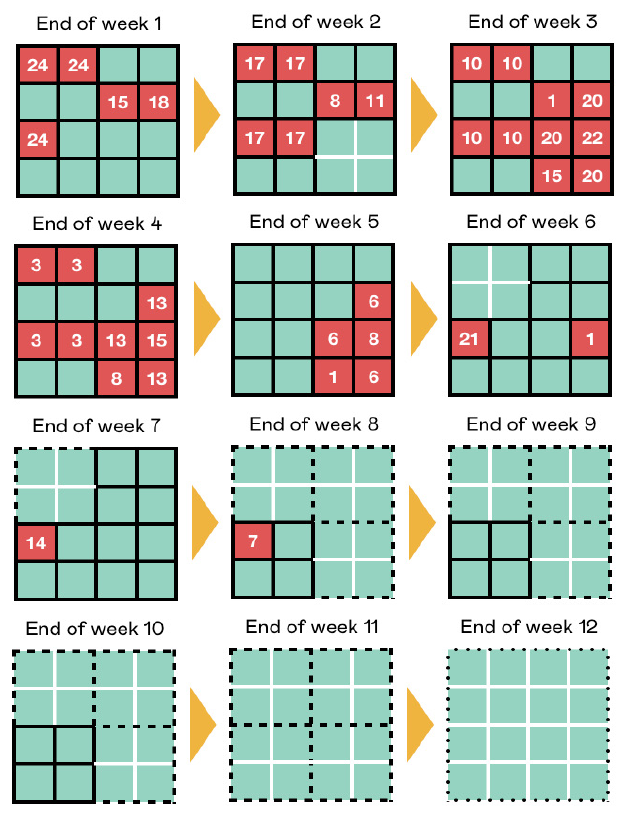
Rémi Carminati: Indeed, we’ve sometimes seen a sort of misunderstanding between the scientific world and public opinion. In the media, scientists’ recommendations have too often been mistaken for simple advice or opinions. That’s a serious problem. There’s constant debate in the scientific community, and that debate necessarily precedes any kind of scientific conclusions or publication. But ultimately, researchers don’t formulate opinions; they present proven results that are backed up with facts, figures, analyses and so on. The statements they make can’t be compared with opinions, even the most valid opinions. They’re fundamentally different. This crisis came on quickly and brought us all face to face with a reality that was full of uncertainty. As agile as it is, research needs to proceed at its own pace, with adequate time for debate among peers, analysis and conclusions, before it goes public with its findings. Researchers also need time to work on their messaging, strengthen their communication and, in general, ensure they can be effectively understood. I’m convinced that the university has a major role to play in that process. At PSL, for example, our students are rigorously trained in scientific methods, regardless of their career ambitions. So we can hope that any future policymakers who are graduates of PSL schools will be equipped to meet any challenge that arises.
Clotilde Thery: The controversies over medical treatments for Covid-19 at the start of the pandemic perplexed me as well. It suggested a negative view of science and medicine that I obviously don’t share. Now, as time has passed, I hope those episodes are behind us. Within my research team, our interaction with the news media has been very limited. I helped draft a press release on our article, which was featured in places like Science & Vie, the popular science magazine, but also the Ouest France newspaper! Lorena Martin-Jaular did an interview in Spanish with a reporter for RFI based in Latin America. But we haven’t spoken directly with politicians or members of the public, so I don’t know whether those conversations have sparked any long-term interest outside the scientific or medical community.
